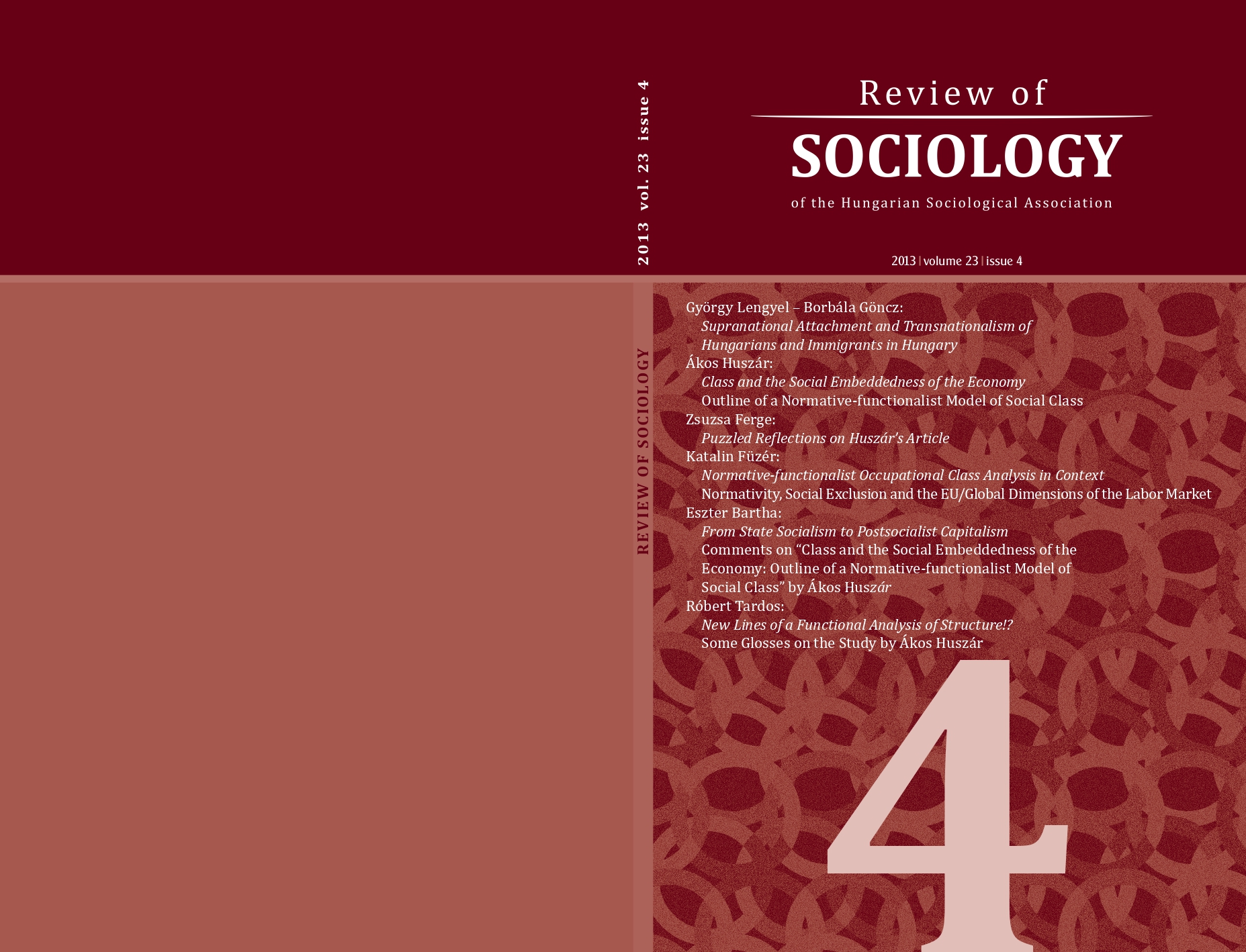Normative-functionalist Occupational Class Analysis in Context
Normativity, Social Exclusion and the EU/Global Dimensions of the Labor Market
Absztrakt
This short contribution is designed to reflect upon the whole body of debate that Ákos Huszár’s series of studies (2013a, 2013b, 2013c) gave rise to (Berger 2013, Róbert 2013, Tardos 2013, Vastagh 2013, Harcsa 2013, Lakatos-Záhonyi 2013a, 2013b). Two issues seem to have inspired participants of the debate: the current theoretical possibilities of social structure analysis (Berger, Tardos, Harcsa and Huszár himself) and the current challenge posed by the new set of census data from 2011 (Róbert, Vastagh, Lakatos – Záhonyi). This duality was already evident at the workshop “The stratification of Hungarian society” organized by the Hungarian Central Statistical Office back in November 2012, and is likely to prevail on the pages of the current issue of Szociológiai Szemle. I myself try to combine the two issues. First, I would like to add a few ideas to expand Huszár’s perspective of a normative-structuralist approach, chiefly in the area of normativity (Part I.). Then I turn to the question of the “social embeddedness” of the occupational system: this prospect entails the problem of the social terrain outside the occupational system, mainly as regards scholarship on social exclusion, including issues of human capital, social capital and spatial social structure (Part II.). In the course of this overview, the merits of various empirical data sources like the census, as well as at least partly longitudinal databases such as EU SILC and the Labor Force Survey will be addressed. Finally, I close with a few remarks on the EU and the global context of the occupational system (Part III.).





